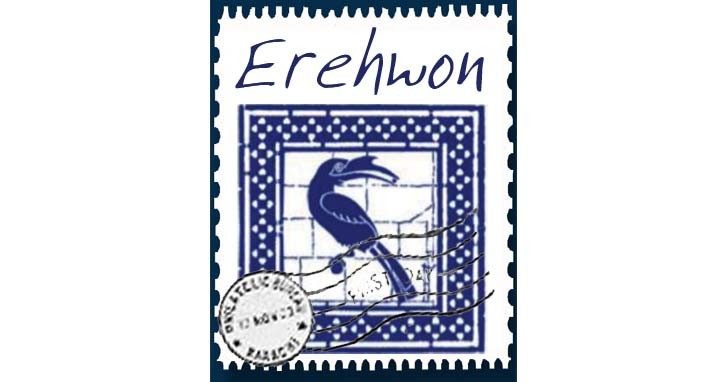
The majestic hornbills or ‘dinosaur birds’ residing in Lahore’s old gardens and avenue plantations

Our fruiting fig tree in Lahore shakes suspiciously as if a small boy is concealed inside its luxuriant canopy, stealing its plentiful, dark purple figs. But in June when the figs ripen, it is what I think of as our ‘dinosaur birds’, the hornbill family that visits the tree several times a day to feast on its fruit. The bird’s exceptionally large size and weight make our fig tree sway to announce this welcomed thief.
We love to spy on our Indian grey hornbills or the nashaaf as it is known in Urdu, from our sitting room windows. An unusual and large bird, it is sandy grey with a long tail and elongated central feathers. It’s prominent black casque or beak, like a protruding rhinoceros horn, makes it distinct in the bird kingdom. The casque sticks out from its forehead and forms an aquiline-nose-like beak that gives the bird a unique profile.
We know that the female is similar to but more petite compared to her husband who will be her mate for her entire life span. The hornbills are monogamous, choosing only one mate for life. Annually, we enjoy a parade of an awkward new baby hornbill forming a threesome to our resident pair. They browse our street from tree to tree, selecting places to rest, and finding berries to their liking, vocalising loudly.
All day long, the hornbills’ territorial call resounds around our garden in a loud cackling and squealing, kkk-ka-e or rapid piping pi-pi-pi- piu. We know that they’re addressing each other in normal contact call when we hear a chee-oo-ww echo through the tree canopies, which is the most frequent, gossipy sound circulating in our bird community.
Hornbills like to be in open broad-leafed forest, groves and gardens with fruiting trees. Lahore’s old gardens and avenue plantations that are so precious to this city’s denizens are also home to these birds.
If one looks left towards the Shahdeen Building when driving past Wapda House and Charring Cross on The Mall, one will notice two ageing peepal trees growing out of a concrete traffic island. In the melee of traffic, once I spotted two serene hornbills gliding from one peepal to the next while the enervated humans below sweated past, unaware of all but their own noise and bustle.
We are lucky to have some pairs of hornbills as permanent residents around Lahore and Kasur, but overall theirs is a rather small habitat range in Pakistan. They are not sighted in Karachi at all but are much more widespread in India.
Last year from our garden we watched a fascinating Indian grey hornbill enactment over a fortnight. Beyond our garden wall is an old jacaranda tree with a gnarled trunk and a wonderful hole just the size of a nest. We often laugh that a New York Times of the natural world might review this hole as a prime bird property with high security and compelling views of our house.
Our resident female hornbill and her husband were seen over several mornings investigating this tree hole. Sure enough, a few days later we realised it had been approved and we saw a large casque projecting out of it, announcing that a residency has been taken up.
As we researched hornbill homemaking, we witnessed a peculiar characteristic of this bird. The female stays inside the nest while the male seals the nest hole leaving only a small opening for feeding the female. Over days we saw the male hornbill seal up the hole with a mud mixture with just enough space for the wifely casque to stick out. He then would visit several times a day to serve her regurgitated food. A delicious flapjack of fruit and berries served up by one’s husband during pregnancy would be a real comfort I’m sure.
Now the hornbill stronghold had been secured against any possible intruders like the Asiatic squirrels and the parakeets that roam nearby all day. In this way the forthcoming eggs and hatchlings were quite secure inside the sealed cavern of home.
Also read: What dreams may come
But the hornbill is a big, long bird, how might it fit into a confined, sealed cavern over weeks. We’d hit a technical hitch. And here we read about the fascinating solution of how to shrink yourself to fit into a tiny house. While inside the nest, the female will pluck out all her feathers and throw them outside the nest so that it can maintain the required space along with the growing chicks.
When the fledglings are old enough, the mother has grown her new feathers and the young family is unsealed from its hole home to be set free into a post-partum life. All this time, the family is diligently sustained by the father who forages for and feeds his new family.
Lahori men might learn a thing or two about caring for their young and vulnerable families from our very own hornbills!